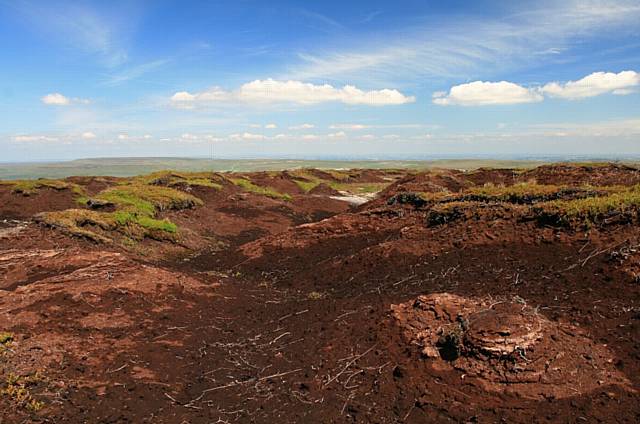Five-year conservation project protects 2,500 hectares of moorland
Date published: 25 July 2015
The success of an ambitious five-year landscape-scale restoration project to revitalise vast areas of important moorland habitat is being celebrated.
Since 2010 the MoorLIFE project, supported by €5m from the EU LIFE+ fund, and €1.7m from partners, has seen work take place to protect and restore four sites in the Peak District and South Pennines.
MoorLIFE, delivered by conservation specialists, Moors for the Future Partnership, has revegetated an area of bare peat the size of 1,300 football pitches and protected about 2,500 hectares of active blanket bog.
Now a report, charting the dramatic changes in the landscape as a result of the work, has been launched and is available to download.
Laura King, MoorLIFE Project Manager said: “This fantastic project is having a positive impact on this iconic landscape.
“Over the last five years MoorLIFE has overseen the transformation of these four areas and the Layman’s Report illustrates the scale of the challenge.”
MoorLIFE has been at the forefront of ground-breaking work to develop new techniques to reintroduce important mosses and plants.
Brendon Wittram, Conservation Contracts Manager said the terrain, unpredictable weather conditions and necessary restrictions in place during the bird breeding seasons each provided their own challenges.
“The location of the sites meant a lot of the materials including tonnes of heather cuttings, fertiliser and grass seed needed to stabilise the bare peat had to be flown in by helicopter.
“A total of 200,000 moorland plants such as cotton grass, bilberry, cloudberry and crowberry were planted by hand, 1.5 billion Sphagnum moss fragments were spread and 30,000 Sphagnum plug plants were introduced which form the basis of new blanket bog.”
The work did not end there with 4,000 stone and heather bale dams built to hold rainwater on the moors, sustain growing plants, halt the spread of wildfires and slow the flow of downpours into our reservoirs and rivers to reduce flood risk.
The restoration of blanket bogs, devastated by 150 years of industrial pollution, summer wildfires, and erosion, will play a key role in the UK’s action on climate change, resilience to natural disasters such as floods and fire, water quality and biodiversity.
Do you have a story for us?
Let us know by emailing news@rochdaleonline.co.uk
All contact will be treated in confidence.
Most Viewed News Stories
- 1Former councillor and hospital campaigner Jean Ashworth has died
- 2Northern Healthcare opens supported living service in former Rochdale hotel
- 3Middleton school hails another outstanding inspection result
- 4Family event to celebrate Earth Day to be held at Number One Riverside
- 5No trams between Oldham and Rochdale this Sunday
To contact the Rochdale Online news desk, email news@rochdaleonline.co.uk or visit our news submission page.
To get the latest news on your desktop or mobile, follow Rochdale Online on Twitter and Facebook.



